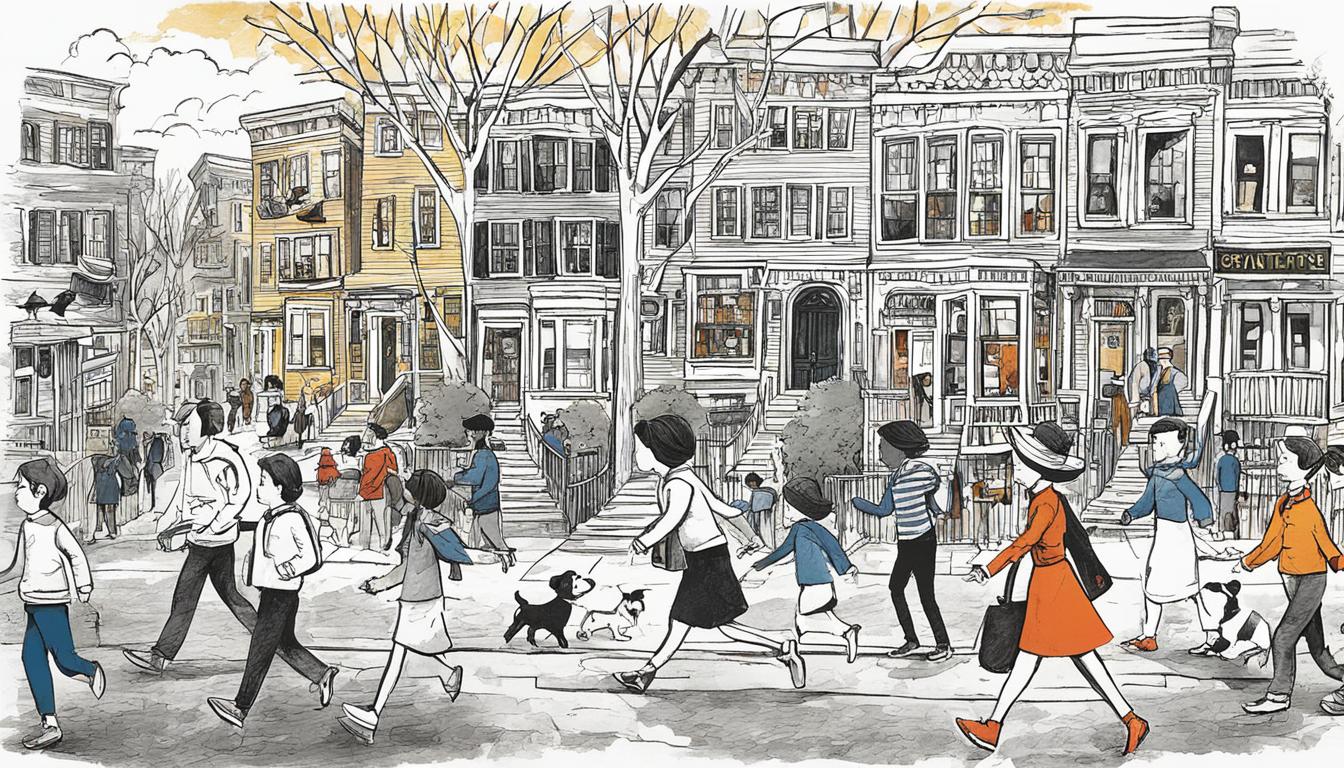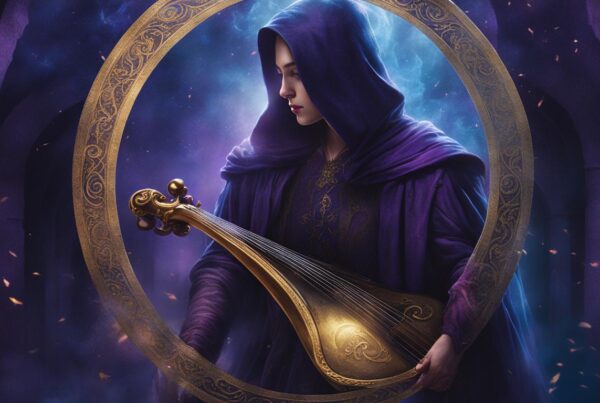Exploring the rich tapestry of human connections, Ann Patchett’s novel “Run” artfully depicts a story of kinship, identity, and fate, becoming a pivotal contribution to contemporary fiction. This fiction review offers an analysis of the literary themes that propel the narrative, exploring the dynamics of a complex family saga and unraveling the meticulously crafted lives of its novel characters. At the heart of the plot lies the assertion that who we become is often an intricate interplay of the relationships we forge and the circumstances we navigate. “Run” stands as a testament to Patchett’s remarkable ability to nuance character and context, laying bare the emotions and motivations that drive us.
In delving into the depths of “Run,” we uncover how Patchett’s narrative structure synergizes the personal odysseys of each character amidst themes of societal expectations and personal ambition. This analysis ventures beyond the surface of the novel’s storyline to appreciate the subtleties of character development and relational intricacies, essential for understanding the multilayered dimensions of this family saga. Join us as we unravel what makes “Run” an exemplary piece in the realm of fiction, and why its analysis remains integral to the appreciation of Ann Patchett’s literary craft.
Introducing Ann Patchett’s “Run”
Ann Patchett stands among the luminaries of contemporary literature, often recognized as a bestselling author whose work resonates with readers and critics alike. Patchett’s novels, including the enthralling “Run,” offer intricate explorations of human emotion and family dynamics, earning her a distinguished place in the pantheon of modern storytellers.
Overview of Patchett’s Literary Career
Ann Patchett’s contributions to literature span several acclaimed novels, essays, and non-fiction works. Her literary acclaim has been cemented not only through bestselling status but also through her numerous awards and dedicated readership. Patchett’s storytelling prowess is marked by her nuanced character development and adept pacing, securing her reputation in the realm of contemporary fiction.
Summary of “Run”
“Run,” a compelling addition to Ann Patchett books, delves into the complex web of familial relationships against the backdrop of a harsh Boston winter. The novel’s plot unravels the story of the Doyle family, revealing secrets and confrontations that challenge the traditional narrative of kinship and allegiance. The “Run” summary encapsulates a tale that is both emotionally charged and thought-provoking, mirroring the unpredictability and endurance inherent in family ties.
Critical Reception of the Novel
The forte of Ann Patchett’s “Run” lies not only in its storytelling but also in how it has been received across the literary landscape. Garnering literary acclaim, the novel has been touted for its depth and relevance by both renowned critics and avid readers. The book’s reception reflects Patchett’s ability to transcend the boundaries of fiction to pose resonating questions about identity, responsibility, and belonging.
| Awards and Nominations | Reader Reviews and Ratings | Critical Acclaims |
|---|---|---|
| Shortlisted for key literary awards | High average reader ratings across platforms | Praise for nuanced character portrayals |
| Recipient of several book-of-the-year commendations | Positive testimonials attesting to the story’s impact | Recognition for enriching contemporary literature |
| Honored by reading groups and book clubs | Endorsements from various reader demographics | Commentary on Patchett’s masterful use of language |
Character Analysis: The Doyle Family Dynamics
In Ann Patchett’s novel “Run,” the Doyle family is a constellation of complex personalities, each member contributing to the saga with distinct perspectives and experiences. The interplay between the characters not only drives the narrative but also offers a profound “Run” character study, examining the nuances of sibling relationships and character development under the watchful eye of Bernard Doyle.

Exploring the Relationship Between the Siblings
Deep within the heart of the Doyle family lie the tangled threads of sibling bonds. These relationships provide a fertile ground for exploring personal dynamics that ebb and flow with the novel’s progression. Each sibling comes to life under Patchett’s pen, revealing insecurities, rivalries, and unconditional support. As they navigate family secrets and personal crises, their individual paths of growth emerge, tightly woven into the fabric of the family’s collective story.
The Patriarch Bernard Doyle’s Influence on the Plot
Bernard Doyle, the patriarch whose aspirations for his children shape much of the narrative, casts a profound influence on each member of the family. His presence resonates through the pages, as he aims to steer his sons towards a future he deems fit. Through him, Patchett explores the weight of parental expectations and the push-and-pull between generational dreams and personal desires. Bernard’s character development serves as a fulcrum for the story, pivoting the trajectory of the other characters as they seek to fulfill or defy his vision.
The Political Undercurrents in “Run”
Ann Patchett’s “Run” deftly intertwines political themes and social commentary, holding a mirror to society’s pressing issues. The narrative explores the subtleties of political influence and examines how personal lives are inevitably intertwined with public policy.
As readers delve into the pages of “Run,” they are met with nuanced representations of socio-political landscapes. The characters become conduits for Patchett to voice observations on political ideologies and their impact on everyday lives. It’s a poignant reflection on how fiction can echo real-world political scenarios and invite introspection.
Patchett doesn’t just tell a story with “Run”; she paints a vivid picture of the societal struggles anchored by the political undertones that shape the narrative’s environment and its characters’ destinies.
By analytically peeling back the layers of “Run,” we uncover how the story’s events serve as allegories for contemporary political discourse. With each chapter, Patchett’s skillful prose encourages the reader to contemplate the complexities of governance, community, and individual responsibility.
In crafting “Run,” Patchett proves that fiction’s mirror to society is potent in its ability to challenge and reveal. The novel stands as a thoughtful piece, prompting a dialogue on the interplay between the personal and the political, an aspect that is both deeply human and profoundly impactful.
| Political Element in “Run” | Implications | Real-world Parallel |
|---|---|---|
| Family Legacy | The influence of political legacies on personal growth and choice | Political dynasties and their societal impact |
| Class Disparity | The socioeconomic divides that dictate the trajectory of the characters’ lives | The growing chasm between socioeconomic classes in society |
| Race and Identity | Characters’ interactions and conflicts rooted in racial identity | Conversations around race and policy-making in contemporary politics |
| Public Service Motivation | Characters’ drive to impact society and the complexities therein | Discussion on the true nature of public service within political spheres |
As “Run” unfolds, readers are prompted to reevaluate their own understanding of how political themes in literature offer significant social commentary and how the politicization of everyday nuances can lead to profound societal insights. In “Run”, Patchett beckons us to question, empathize, and realize the power of storytelling as a reflection of politics and its effects.
Themes of Identity and Belonging
The intricate tapestry of Ann Patchett’s “Run” highlights the profound search for identity discovery amid a complex family narrative. The characters are deftly drawn, each struggling with the fundamental question of their sense of belonging. As Patchett unravels their journeys, the ingrained aspects of race in literature, class dynamics, and societal roles become pivotal to understanding both their individual identities and mutual relationships.
Searching for Self in a Complicated Family Tree
In “Run,” the protagonists maneuver through a labyrinth of familial ties that pose questions about their origins and destinies. The discovery of one’s self-identity transpires through revelations and shifts within the family hierarchy, prompting readers to reflect on their paths to personal recognition within their genealogies.
How Race and Class Shape Characters’ Experiences
Race and class emerge as significant factors that sculpt the experiences of Patchett’s characters. Their interactions and life choices are influenced by these elements, providing a mirror to the societal spectrum and the place of an individual within it.

| Character | Impact of Race on Identity | Impact of Class on Life Choices |
|---|---|---|
| Sullivan | Struggles with racial identity within an adoptive family | Opportunities and dilemmas shaped by affluence |
| Tip | Confrontation with heritage leads to self-awareness | Access to privileged education influences worldview |
| Tennessee | Reunion with biological family offers cultural insights | Social mobility challenges due to socioeconomic status |
Setting as a Character: The City of Boston
The streets and neighborhoods of Boston do more than simply contain the action of Ann Patchett’s “Run”; they add a layer of atmospheric storytelling that’s nearly as active as any character. Born from a rich history and complex socioeconomic elements, Boston’s influence on the novel’s narrative goes beyond a mere setting, breathing life into the plot with each page turn.
The Role of Weather in “Run”
Weather within “Run” is a palpable force, shaping the rhythm of the characters’ lives and echoing their emotional arcs. The winds and snowfalls of Boston’s winter are not only a challenge to contend with but also serve as a metaphor for the turmoil the characters face. The icy grasp of a Boston blizzard parallels moments of narrative tension, creating an atmospheric backdrop that heightens the sense of urgency and reflection.
Boston’s Socioeconomic Landscape as a Backdrop
Furthermore, the socioeconomic tapestry of Boston renders a profound backdrop for the unfolding drama. It’s within this urban setting that the characters navigate their identities and relationships, against a backdrop that reflects real-world class dynamics and racial divides. Ann Patchett does not shy away from using these settings to accentuate conflicts and draw attention to the social fabric that weaves Boston together.
| Element of Boston’s Socioeconomic Landscape | Impact on “Run” |
|---|---|
| Cultural Diversity | Provides a canvas for character interactions and societal commentary |
| Historical Significance | Enriches the narrative with depth and context |
| Economic Disparities | Highlights the theme of social mobility and the aspiration of the American Dream |
| Architectural Elements | Reflects the characters’ personal journeys and inner turmoil |
“Run” within the Context of Patchett’s Body of Work
Ann Patchett’s novel “Run” is an illustrative example of her literary evolution and stands out as a seminal work within her impressive array of literary contributions. In analyzing Patchett’s novels, it becomes evident that thematic analysis and writing style progression are fundamental to understanding the trajectory of her career. Observing “Run” in conjunction with her other significant works, such as “Bel Canto” and “State of Wonder,” allows us to explore the nuanced changes and steadfast themes that mark Patchett’s growth as a storyteller.
Comparing Themes in “Run” to “Bel Canto” and “State of Wonder”
The thematic threads woven through Patchett’s “Run” resonate with the motifs present in “Bel Canto” and “State of Wonder.” A comparative perspective illuminates the shared exploration of human connections and the complex layers of family and societal relationships. Below is a detailed analysis exemplifying how these themes are variably approached across these works.
| Theme | “Run” | “Bel Canto” | “State of Wonder” |
|---|---|---|---|
| Family Dynamics | Diverse forms of kinship and paternal influence | Unlikely alliances forming surrogate families | Rediscovery of familial ties in unexpected places |
| Identity and Belonging | Personal identity entwined with familial legacy | Self-discovery within a multicultural siege | The quest for self amid the Amazonian expanse |
| Socio-political Context | Contemporary urban politics shaping destiny | Operatic hostage crisis as a microcosm of global dynamics | Scientific ambition and indigenous rights at a crossroads |
Development of Patchett’s Writing Style Over Time
Patchett’s writing style has undeniably progressed over years, with “Run” showcasing a more streamlined and polished prose compared to her earlier narratives. Her keen attention to detail and character development has become more refined, as seen through the emotive journeys of “Run’s” protagonists. This development reflects a maturation of voice that Patchett has honed meticulously, culminating in storytelling that is both compelling and resonant.
The Intersection of Faith and Morality
In Ann Patchett’s “Run,” the tapestry of human experiences is elegantly threaded with motifs of faith representation and moral conflict. Through a careful unveiling of religious imagery, the novel probes into the intricate dynamics of character choices against a backdrop of spiritual introspection.
Religious Symbolism in “Run”
Religious symbolism in “Run” is not merely decorative; it serves as a narrative compass that guides the characters’ journeys and their inner turmoils. The motifs embedded within the novel echo the virtues and trials of faith, as well as the moral landscape in which the characters reside. The presence of religious artifacts, the reverence for specific traditions, and the narrative’s liaison with elements of salvation and forgiveness all concretize the omnipresence of faith in their lives.
Moral Dilemmas Faced by the Characters
The characters in “Run” are often at crossroads, where the moral high ground is both muddied and sanctified by personal beliefs and societal pressures. These junctures mark pivotal points of growth, presenting moral quandaries that shape the characters’ identities and their relations with one another. The dilemmas encountered thus reflect profound reflections on morality, diving deep into the soul’s conflict between duty, desire, and the greater good.
The exploration of faith and its convolutions is an ongoing dialogue between the characters and their creator, stitching together a narrative that resonates with readers’ own experiences of belief, doubt, and resolution.
Ann Patchett’s nuanced portrayal of religion in “Run” captures the essence of faith representation in contemporary literature, highlighting her capacity to channel deep-rooted spiritual themes into the orbits of everyday life. In cataloging the recurrent themes and the symbolic elements in “Run”, we see the following patterns:
| Theme | Description | Impact on Character Development |
|---|---|---|
| Faith as Sanctuary | Faith is represented as a haven for characters seeking solace from their troubles. | Characters tend to evolve by introspecting their personal beliefs, often finding answers within their spiritual engagements. |
| Moral Ambivalence | The characters frequently grapple with the gray areas of morality, where decisions are not clearly right or wrong. | These moments of ambivalence become catalysts for character growth and self-awareness. |
| Religious Community | The shared religious beliefs and communal practices depicted are threads bonding characters together. | The community influence aids characters in navigating their personal struggles and moral choices. |
Through the medium of fiction, Ann Patchett effectively mirrors the complex relationship between faith and morality, challenging her characters—and through them, her readers—to question, understand, and embrace the multifaceted aspects of religious experience.
Conclusion
As we encapsulate the profound journey through Ann Patchett’s “Run,” we are left with lasting impressions of a narrative replete with complexities of family, identity, and the choices that define us. This final review finds that the novel’s portrayal of the human condition within its vivid Bostonian tapestry delivers a richly satisfying reading experience, revealing the intricate workings of fate and the ties that bind. The “Run” legacy is firmly established in its nuanced exploration of life’s unpredictability and our yearning for connection.
Final Thoughts on “Run” and Its Lasting Impressions
“Run” stands as a testament to Patchett’s masterful characterization and her acute sensitivity to the ebb and flow of familial relationships. The book conclusions we draw are not merely about the narrative’s resolution but about the reflective space readers are left with to ponder their own familial bonds. One walks away from “Run” contemplating the novel’s larger implications on the essence of kinship and the driving forces behind individual purpose.
Recommendations for Readers Who Enjoyed “Run”
For those who found resonance in the halls of the Doyle family’s story, reader recommendations would naturally include other works by Ann Patchett, such as “Bel Canto” for its similarly rich character studies and “The Dutch House” for its piercing look at family over time. Exploring books like Celeste Ng’s “Everything I Never Told You” or Jodi Picoult’s “My Sister’s Keeper” may also satisfy readers with their compelling examinations of family dynamics and moral complexities.



